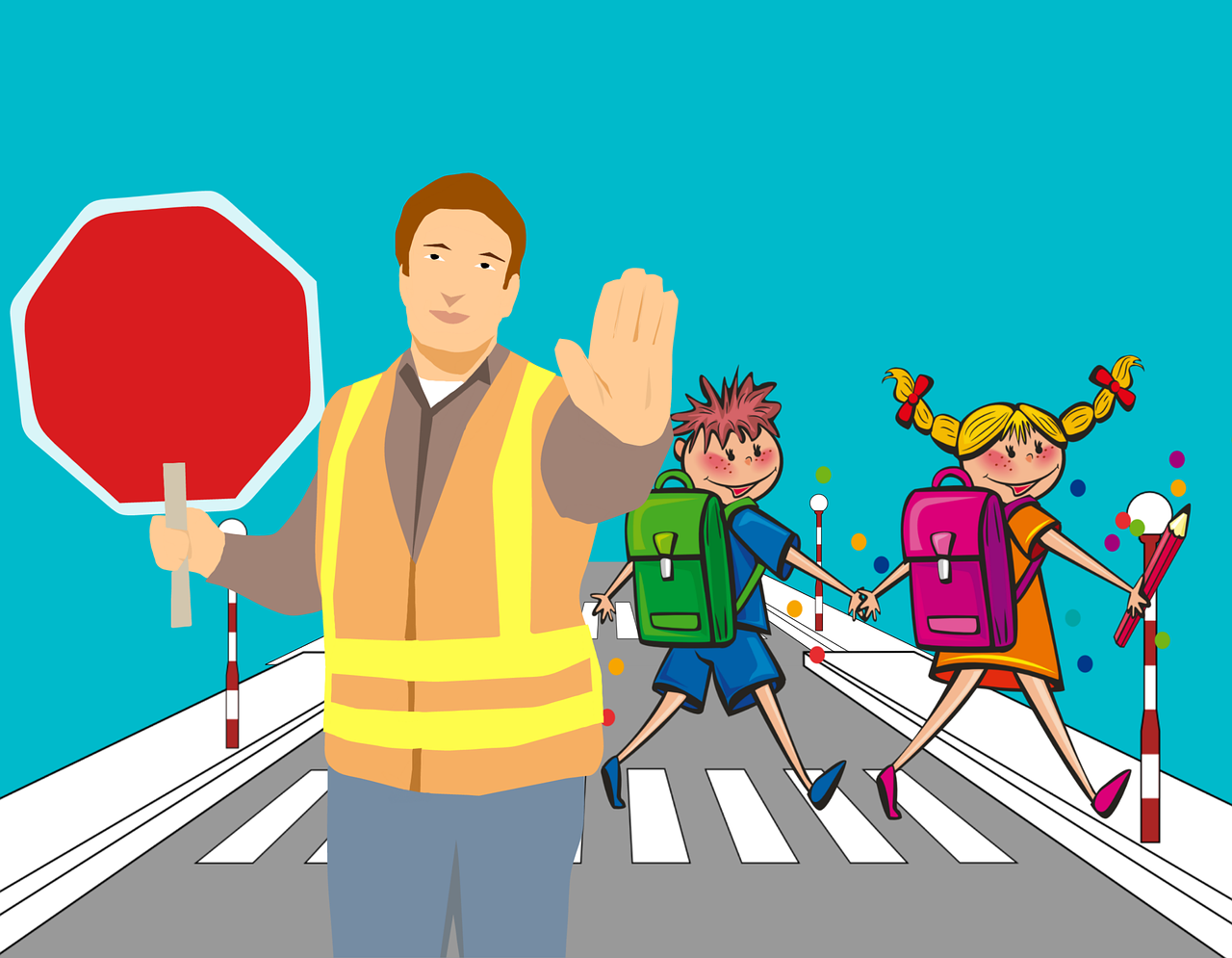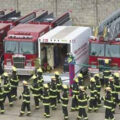What Is Public Safety?
Public safety refers to the measures and actions taken by governments, communities, and individuals to protect and ensure the well-being of the general public. It involves various aspects of maintaining a safe and secure environment for individuals and communities to live, work, and enjoy their daily lives without fear of harm or danger.
Public safety encompasses a wide range of concerns and efforts, including:
- Law Enforcement: This involves the work of police officers, sheriffs, and other law enforcement agencies to prevent crime, maintain order, and protect the public. They enforce laws, respond to emergencies, investigate crimes, and apprehend criminals.
- Fire and Emergency Services: Fire departments and emergency services personnel respond to fires, medical emergencies, natural disasters, and other emergencies to protect lives, property, and the environment. They provide rescue, first aid, and disaster management services.
- Public Health: Public health initiatives aim to prevent and control diseases, promote healthy lifestyles, and ensure access to healthcare services. Public health agencies work on vaccinations, disease surveillance, food safety, environmental health, and other measures to safeguard public well-being.
- Emergency Management: This involves planning, coordinating, and responding to natural and man-made disasters, such as hurricanes, floods, terrorist attacks, and pandemics. Emergency management agencies prepare response plans, conduct drills, and coordinate resources to mitigate the impact of emergencies.
- Traffic Safety: Efforts to ensure safe transportation on roads and highways fall under traffic safety. This includes traffic law enforcement, road engineering, driver education, and promoting safe driving practices to prevent accidents and minimize injuries.
- Public Education and Awareness: Public safety also involves educating and raising awareness among the public about potential risks and how to respond to emergencies. This includes campaigns, training programs, and community outreach initiatives to empower individuals to take proactive measures for their safety.
- Cybersecurity: With the increasing reliance on digital technologies, public safety also encompasses protecting individuals, organizations, and critical infrastructure from cyber threats. It involves securing computer systems, networks, and data to prevent unauthorized access, data breaches, and cybercrime.
Public safety encompasses a broad range of initiatives aimed at safeguarding the well-being and security of the public, promoting resilience, and minimizing risks and hazards in society.
What is public safety services?
Public safety services refer to the specific services and resources provided by government agencies, organizations, and professionals to ensure public safety and security. These services are dedicated to protecting individuals, property, and communities from various risks, emergencies, and threats. Here are some common examples of public safety services:
- Law Enforcement: Police departments and law enforcement agencies play a crucial role in maintaining public safety. They enforce laws, investigate crimes, respond to emergencies, conduct patrols, and provide community policing services. Law enforcement officers are responsible for maintaining order, deterring criminal activity, and ensuring public safety.
- Fire and Rescue Services: Fire departments and rescue services are responsible for responding to fires, medical emergencies, hazardous materials incidents, and other emergencies. They conduct firefighting operations, perform search and rescue missions, provide emergency medical services, and offer public education on fire safety.
- Emergency Medical Services (EMS): EMS providers offer immediate medical assistance to individuals in need. They respond to medical emergencies, accidents, and other critical incidents. EMS personnel provide on-scene medical treatment, transport patients to hospitals, and play a vital role in saving lives and stabilizing injured individuals.
- Emergency Management: Emergency management agencies are responsible for planning, coordinating, and responding to natural disasters, public health emergencies, and other large-scale incidents. They develop emergency response plans, coordinate resources and agencies during emergencies, provide public alerts and warnings, and facilitate recovery efforts.
- Dispatch and Communication Centers: These centers serve as the primary point of contact for emergency calls. Dispatchers receive and prioritize emergency calls, gather critical information, and coordinate the appropriate response by dispatching law enforcement, fire, or medical personnel to the scene. They ensure effective communication between responders and individuals in need.
- Public Safety Telecommunications: Telecommunications services, including emergency hotlines and 911 systems, are vital components of public safety. These services allow individuals to quickly report emergencies, seek assistance, and receive guidance during critical situations. Telecommunication professionals handle emergency calls, provide instructions, and dispatch appropriate resources.
- Public Safety Education and Training: Public safety services also include educational programs and training initiatives to raise awareness and enhance the preparedness of individuals and communities. These programs may include safety education in schools, community workshops, CPR and first aid training, disaster preparedness guidance, and crime prevention initiatives.
These are just a few examples of public safety services. The specific services provided may vary depending on the jurisdiction and the needs of the community. The overall goal of public safety services is to protect lives, property, and the well-being of the public, and to create a safe and secure environment for everyone.
Why is public safety important?
Public safety is important for several reasons:
- Protecting Lives: Public safety measures aim to protect individuals from harm and ensure their physical well-being. By enforcing laws, responding to emergencies, and providing medical assistance, public safety services save lives and reduce the risk of injuries and fatalities.
- Maintaining Order: Public safety efforts help maintain order and prevent crime. Law enforcement agencies work to deter criminal activity, apprehend offenders, and promote a sense of security within communities. This contributes to a stable and peaceful society where people can live and work without fear.
- Preserving Property: Public safety measures help protect personal and public property from damage, vandalism, and theft. Fire departments respond to fires and rescue people from dangerous situations, while emergency management agencies prepare for and respond to natural disasters. These efforts minimize property loss and economic damage.
- Promoting Community Well-being: Public safety contributes to the overall well-being of communities. When people feel safe and secure in their neighborhoods, they are more likely to participate in community activities, build strong social bonds, and experience a higher quality of life. Public safety enhances community cohesion and fosters a sense of belonging.
- Enhancing Public Health: Public safety initiatives extend to public health concerns. Public health agencies work to prevent the spread of diseases, respond to health emergencies, and promote healthy behaviors. These efforts safeguard the well-being of individuals and populations, leading to improved overall health outcomes.
- Supporting Economic Development: Public safety is crucial for economic growth and prosperity. Businesses and investors are more likely to operate in areas with a reputation for safety. When people feel secure in their surroundings, they are more likely to engage in economic activities, leading to job creation, increased trade, and a thriving local economy.
- Ensuring Social Justice: Public safety plays a critical role in ensuring social justice and equitable treatment for all members of society. It involves upholding the rule of law, protecting civil rights, and addressing systemic issues that disproportionately affect marginalized communities. Public safety efforts strive for fairness, justice, and equal protection under the law.
Overall, public safety is important because it directly impacts the well-being, security, and quality of life of individuals and communities. It promotes a safe, orderly, and inclusive society where people can thrive, and it is a fundamental responsibility of governments and societies to prioritize and invest in public safety initiatives.
How to work in public safety?
Working in public safety typically requires a combination of education, training, and experience. Here are some steps you can take to pursue a career in public safety:
- Identify Your Area of Interest: Public safety encompasses various fields, such as law enforcement, fire and rescue, emergency management, public health, and more. Determine which area aligns with your interests and skills.
- Research Educational Requirements: Look into the educational requirements for your desired field. Some positions may require a high school diploma or equivalent, while others may require a college degree in a related field such as criminal justice, emergency management, or public health.
- Pursue Relevant Education: If necessary, pursue the required education for your chosen field. This may involve enrolling in a degree program, attending vocational or technical schools, or completing specialized training courses. Seek out accredited institutions and programs recognized in your jurisdiction.
- Gain Practical Experience: Practical experience is invaluable in public safety. Look for opportunities to gain experience through internships, volunteer work, or entry-level positions in relevant organizations. This hands-on experience will provide you with valuable insights and enhance your skillset.
- Obtain Certifications and Licenses: Depending on your field, there may be specific certifications or licenses required. For example, law enforcement officers often need to complete police academy training and pass licensing exams. Firefighters may need to complete firefighter training and obtain certifications in areas such as CPR, hazardous materials, and rescue operations. Research the specific requirements in your chosen field and work towards obtaining the necessary certifications.
- Networking and Professional Development: Engage in networking activities within the public safety field. Attend industry conferences, join professional associations, and connect with experienced professionals. Networking can provide valuable insights, mentorship opportunities, and potential job openings. Additionally, stay updated with the latest developments in your field through continuing education and professional development programs.
- Apply for Positions: Once you have the necessary education, training, and experience, start applying for positions in public safety. Research job opportunities with government agencies, private organizations, or non-profit entities. Tailor your resume and cover letter to highlight your relevant skills and experience. Prepare for interviews by familiarizing yourself with the organization’s mission, values, and challenges in the field.
- Maintain Physical and Mental Fitness: Public safety careers often require physical and mental resilience. Prioritize your physical fitness, maintain a healthy lifestyle, and develop coping mechanisms to handle stress and challenging situations.
Remember that specific requirements and processes may vary depending on your jurisdiction and the specific field within public safety. It is advisable to consult with professionals already working in your desired field to gain insights and guidance specific to your area of interest.






